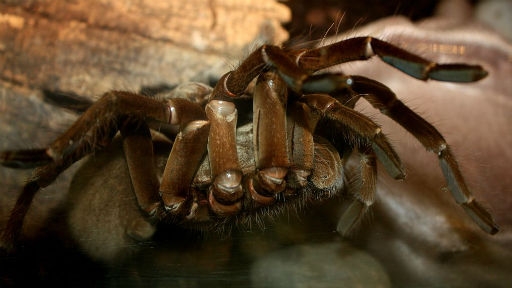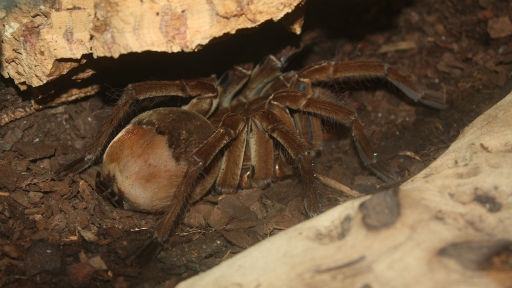
A warning for arachnophobes: there are very, very big spiders in this post.
The Goliath birdeater tarantula is found in the South American rainforest and is the largest spider in the world.
According to biologists, despite the name, it only rarely preys on adult birds.

That makes sense, though. You need a large meal when you’re a spider the size of a dinner plate. A fully-grown Goliath birdeater has a leg span of about a foot, and a thick, heavy body that can weigh as much as 7 ounces.
As if size isn’t enough, the Goliath birdeater is venomous, and has colossal fangs that are more than big enough to pierce human skin. However, the venom is relatively harmless and its effects are comparable to those of a wasp’s sting. In all likelihood, a bite wouldn’t be venomous enough to kill a person, but it would definitely hurt.

When these giant creepy crawlers are really threatened, though, they don’t use their fangs. That’s because they’ve got an even crazier weapon: The hairs on their abdomen, called urticating hairs, have barbed tips. A spider in danger will turn around and use its back legs to shoot these hairs like tiny arrows, and when embedded in human skin they cause extreme irritation.

In fact, in the 20th-century joke shops often sold “itching powder,” a mixture of talcum powder and the Goliath birdeater’s urticating hairs.

Like most tarantulas, Goliath birdeaters kept as pets tend to be relatively easygoing, and though they will bite, it is typically only in self-defense. But a spider that commonly feeds on rodents, frogs, lizards, snakes, and – again – adult birds, is certainly a spider to approach with caution.
Featured image: John/Flickr




